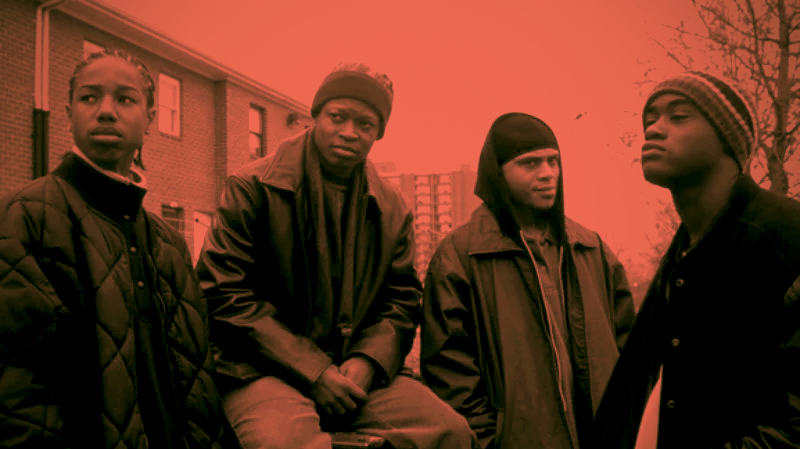10 Years Later, We’re Still Catching Up With “The Wire”
“Have you seen 'The Wire'?” has somehow managed to become a cliche question and an earnest inquiry. On the one hand, for a long time, especially during the end of its TV run and right after it concluded, it was a question meant to signify one's own highbrow-yet-gritty tastes in high end television. Talking about the Sopranos was something that fit in too neatly with other mob-genre films like The Godfather and Goodfellas.

“The Wire,” by contrast, was idiosyncratic. And as with most under-acclaimed media that gains a following, it is easy for it to become a signifier of taste and turn into something overrated and under-criticized. In some ways this happened to “The Wire.” It became something associated with especially white men of a certain demographic and age group that sat on a shelf of a certain kind of self-presentation next to Infinite Jest, Chuck Palahniuk novels, a handful of vinyl records, and maybe a print of something made by Banksy.
On the other hand, “The Wire” does not deserve its cliched reputation, and the question “have you seen 'The Wire'?” is also a shorthand for seeing if the summative exposition about race, economics and policing in urban America during the drug war is something with which you are, indeed, familiar. Because we should not be mistaken, like Twain's Huckleberry Finn or Dickens' Tale of Two Cities or Dostoevsky's Notes from the Underground, “The Wire” is the piece of literature that emerged to reflect on the profound dynamics of broad, shifting social realities. “The Wire” isn't just a solid piece of television like “Mad Men” or “Breaking Bad.” “The Wire” is required reading: to understand America and its urban landscape over the past 30 years, you must watch this show. I suppose that can all be part of the cliche when you say “you have to watch 'The Wire,'” but it doesn't make it less so.
But it doesn't stop there. “The Wire” doesn't just tell us about the nation and its people, it also represents the world and the people in it in ways that provide a veritable education in social theory, bringing to our attention aspects of our cultural worlds dimensions of human society we often overlook. Consider the very first scene in the show––a preface for the entire subsequent five seasons:
“This is America,” is, of course, a double-entendre. America is a place that lionizes freedom above all else and ensures that we all have access to pursue our ambitions. At the same time, America is a place of real violence and dysfunction, where the outcome of a game of dice may be a bullet. But no amount of thievery or violence (or corruption or social status) can interrupt a fundamental conviction shared by everyone from the dealers to the police to the politicians in the show: in America, everyone gets to play.
And yet. Just as the show demonstrates how univocal that conviction is, it pushes back against the idea that all of the players have equal access or a shared status to their own vision. The games that play out on “The Wire” are games of power, wealth and influence. But “The Wire” does not focus its eye only on those solid places where power is exercised and pooled. This attentiveness to powerful centers and dis-empowered peripheries may be what makes “The Wire” exceptional. In just one example from a recurring motif of outsiders being introduced to affluent, white society in the form of upscale, downtown restaurants, D'Angelo is forced to confront forms of power that are beyond the power exercised in his day to day life. Note the disjuncture between, “if you got money, you can be whatever you say you are. That's the way it is,” and everything else going on in this scene.
“The Wire” pays special attention to the gaps, the margins and the in-between places that most pieces of media do not have the bandwidth to engage. “This is America” is also a way of describing a society that puts people into games they don't want to play. In Season 4, a young character finds that the world he knows does not have a place for him. And when he asks one of the only adults in his world without a stake in the game that surrounds him about why he doesn't fit, all he can hear is that there is a world elsewhere, but there's no way to get there.
“How do you get from here to the rest of the world?” Television does not ordinarily ask questions that incisive. And there are very few examples of literature that are courageous enough to answer that question with, “depending on your race, your social location and your status in America, sometimes, you can't.”
Its impossible to encapsulate why “The Wire” still matters. Increasingly, the world is facing a different set of challenges. Cities increasingly look different than the Baltimore of “The Wire,” as housing policies and economies have shifted. The drug problems that we face in 2018 look very different than the urban-centered crack and heroine epidemics of the late 80's that inform “The Wire.” And even our political landscapes and policing cultures are shifting as important voices have called attention to their inadequacies. But “The Wire” still matters because, fundamentally, it isn't about a particular time and place. It is about how human beings and their experiences are always compelled to fit into constraints that end up shaping who we are. “The Wire” matters because it reminds us that our country is bigger, deeper, and more peopled than we usually imagine. “The Wire” matters because it captures a perspective on our society that endures, and which has not been captured in this way. It is a political show, because it can shake a viewer into a new recognition of the world. In a way that Walter White, Don Draper and Tony Soprano never possibly could, the characters in “the Wire” live on and fit into our world in a way that still says something deeply true about our reality. And that makes it important in a way that we have never fully grappled with.
10 years later, and “The Wire” still has something to say. We should all make sure to listen.









